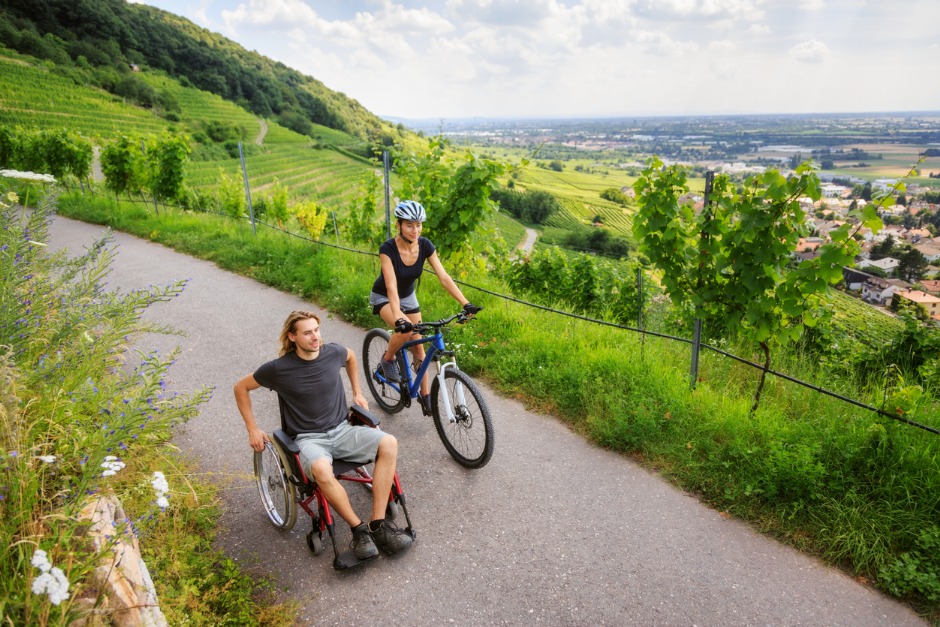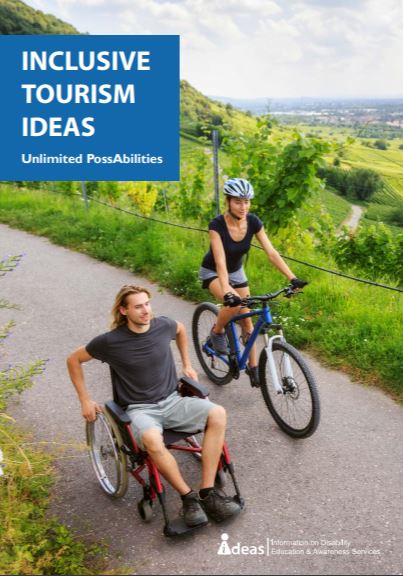Disability in Australia is usually taken to mean anything that affects up to 20% of usual human activity including understanding, seeing, hearing, getting around and communicating.
1. What a 'disability' is
Disability is part of human diversity. 1 in 5 Australians have a disability, that's around 4 million people, and this proportion is increasing with an ageing population. People with disability purchase consumer goods, have jobs, go on holidays, access information and contribute to society in the same way that people without a disability do. The only difference is that often people with a disability come up against significant barriers while trying to do the things that many people take for granted.
Types of disability
The majority of people with disability have a physical disability (83.9%), while 11.3% have a psychosocial and behavioural disability and 4.8% have an intellectual or developmental disability.
- Physical disabilities affect mobility or dexterity
- Intellectual or learning disabilities affect a person's abilities to learn
- Mental Illness affects a person's thinking processes
- Sensory disabilities affect a person's ability to hear or see
- Neurological disability affects the person’s brain and central nervous system
- Physical disfigurement, or
- Immunological - the presence of organisms causing disease in the body
People with disability are part of every section of our community; workers, customers; and citizens. No two people with the same disability experience their disability in the same way. The only thing that distinguishes a person with a disability is they may require some form of adaptation or adjustment to enable them to do certain things in the same way as people without disability.
Information sourced from AND Australia
2. What 'disability' includes
Disability types include all sensory, cognitive, mobility, mental ill-health no matter how or when acquired. It’s important to remember that many barriers faced by people with disability are also relevant to any person using wheels or walkers in any context including mums and prams. It is worth noting that less than 5% of people with disability are wheelchair users.
3. What the Inclusive Tourism Market is worth
$8 billion! See ‘My Travel Research, Understanding the opportunity for Australia in Accessible Tourism 2018’ for an outline of the accessible tourism market value. To put this figure into perspective, it is worth comparing it to the total market value of inbound Chinese Visitor Arrivals in 2016, which was $9.2 billion in total spending.
4. How people with disability plan trips
People with a disability plan their trip just like everyone else. However, the critical bugbear for them is fragmented and often inaccurate information, poor product knowledge by hotel staff and attraction managers, and sometimes poor attitudes. For instance, many accommodation providers have accessible rooms but don’t promote them. The details of the features of accessibility for these rooms might be buried in the FAQs on a website, or not even be known by the reservation team which might be centralized anywhere in the world.
Nothing beats the power of a photo. What people with disabilities want is sufficient accurate detailed information which allows them to be absolutely in charge and confident of their spending and booking decision. Examples of this are the accurate measures of door widths, accessibility to reception and concierge facilities, details about the bathroom, whether there is a ‘lip’ to enter the shower space, the seating available in shower space, whether there is a bath or not and access to the bath, and so on.
5. What they need to take into account when trip-planning and how your business can cater to this
Here are some top tips that would make a real difference to people with disability choosing their spending and staying choices:
- Prominent and easy to find the provision of details in print media, web media, and in alternate formats such as audio, braille.
- Put subtitles on videos.
- Make the information easy to understand.
- Pictures, pictures, pictures including pictures of facilities!
- Marketing campaigns to capture accessibility.
- Get a grip on inclusive language and train your front-facing staff in welcoming with very small adjustments. This includes coming out from a counter to be at the same height as the customer. And if the customer with a disability has a carer or support person with them, address your conversation, questions, and answers to the person with disability themselves, not the carer.
6. Useful websites on Inclusive Travel
There are some great online resources for Inclusive Travel. We list a few here to get you started:
- IDEAS Travel Directory
- ParkWeb Vic - Improving Park Access for All
- Sydney New Year's Eve - Accessibility
- Euan's Guide
- Disabled Holidays - Accessible Cruises
- Brett Approved
- Hidden Secrets Tours - Accessible Tours
7. How important it is to cater to people with disability
Providers in the tourism and travel sectors should recognize the dollars they will miss out on should they not make easy adjustments that remove barriers to people with disabilities and their families booking and purchasing their offer.
8. Why Inclusion is important
A person with a disability should not be excluded from the travel of any kind, because it is their right. With the right information and effective trip planning, you can hire almost anything at many destinations within and beyond Australia. This includes hoists, mobility devices of all kinds from scooters to wheelchairs, oxygen supplies, and tanks. Access to attractions is improving all the time such as in national parks in Australia, accessible walking tours in Auslan and for people with vision impairment access to beaches, surfing, accessible nippers, cruising, and adventure travel.
9. The Inclusive Travel sector is growing
Yes, inclusive travel is growing throughout the world. Major cities in Europe are providing access to their historic centres and attractions. India, parts of Asia such as Japan and Singapore with good public and transport infrastructure lead the way and parts of Africa are also ramping up this aspect of tourism as an economic lever. As in all things, experience changes perception. In Australia many festivals lead the way. The Wide Angle Film Festival is a great example, engaging in cinema access for people with disability as a ‘usual thing’ with added features, such as closed captions, audio description for people with vision impairments, and physical access.
The New Year’s Eve Fireworks in Sydney has developed viewing platforms, safe spaces for people and families with children with disabilities, as well as a special app which has audio descriptions of the fireworks for people who have a vision impairment. In addition theatre venues and productions are increasing their ‘relaxed’ performances for families and children, with dimmed lighting, provision of headphones, comfy beanbag style seating, and an encouragement to get up and move around if necessary. Many of these operators, convenors, attractions and transport providers are really switched on to the end-to-end journey experience so that people with disabilities and their travelling companions have all the information and access they need to leave home, arrive at an event or venue, experience the delights on offer and return home in comfort, just like everyone else.
10. Where it's growing and how to implement changes to your business model now to take advantage
Cruising has been a growth sector in accessible tourism for decades now and specialist providers are a growing market. Specialist providers, venues and operators are wising up to the opportunities of travelling with Nanna, expanded families travelling together, and people experiencing music, art, collections, festivals, nature and sites available to all.
For a complete overview of Inclusive Travel and for tips and tools for building inclusive and accessible businesses and events, download a copy of our Inclusive Tourism IDEAS guide here:
”It is outrageous common sense that as our population ages the incidence of disability increases. Couple with this, the trend to holiday or adventure in an intergenerational way, and to plan travel around events and festivals, providers can choose to engage huge loyalty from large markets well and easily served.” - Jenelle Becker, IDEAS Marketing Lead
People with disability can engage experienced trip planners and specialist travel agents to get on the road with their needs and wants.
ideas.org.au shows the detailed information sets which are ideal so that people with disability and their families, and carers can make the decisions they want to.




